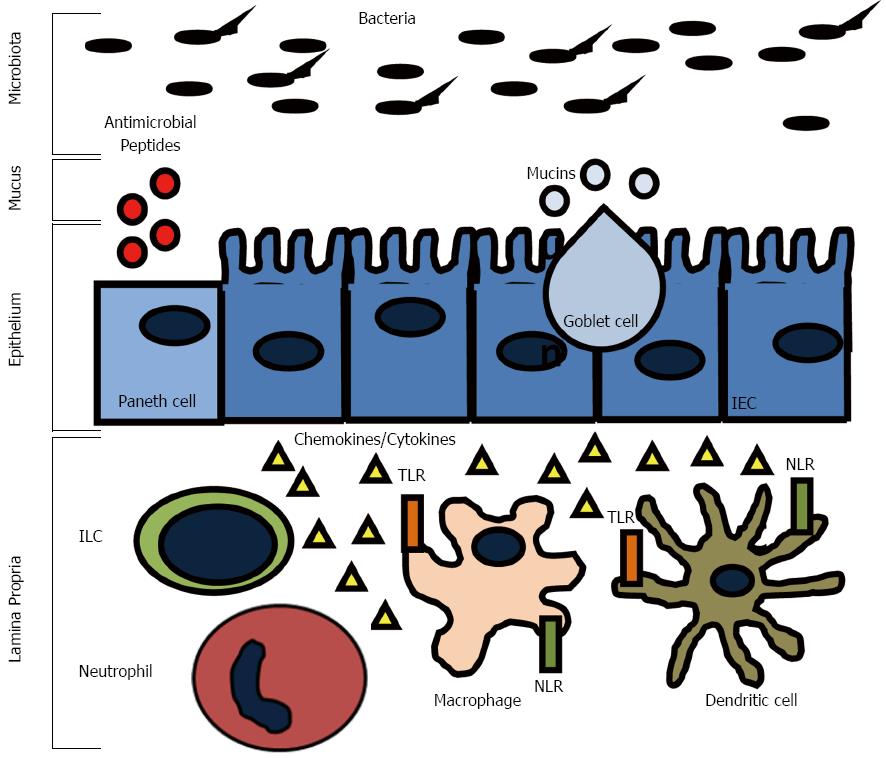Copyright
©2014 Baishideng Publishing Group Co.
World J Gastroenterol. Jan 7, 2014; 20(1): 6-21
Published online Jan 7, 2014. doi: 10.3748/wjg.v20.i1.6
Published online Jan 7, 2014. doi: 10.3748/wjg.v20.i1.6
Figure 1 Innate immune system responses in the gut.
The intestinal epithelial barrier is equipped with several layers of defense mechanisms to limit luminal antigen translocation. Goblet cells, Paneth cells, and enterocytes secrete mucins and antimicrobial peptides that assemble into a mucus layer. Innate immune system cells, such as macrophages and dendritic cells, can sense invading bacteria through extracellular and intracellular pattern recognition receptors (Toll-like receptors-TRLs and NOD-like receptors-NLRs) and initiate rapid inflammatory reponses mediated by the secretion of cytokines and chemokines. Innate lymphoid cells (ILCs) are also found in the lamina propria where they contribute to cytokine production and inflammatory cell recruitment.
- Citation: Wallace KL, Zheng LB, Kanazawa Y, Shih DQ. Immunopathology of inflammatory bowel disease. World J Gastroenterol 2014; 20(1): 6-21
- URL: https://www.wjgnet.com/1007-9327/full/v20/i1/6.htm
- DOI: https://dx.doi.org/10.3748/wjg.v20.i1.6









